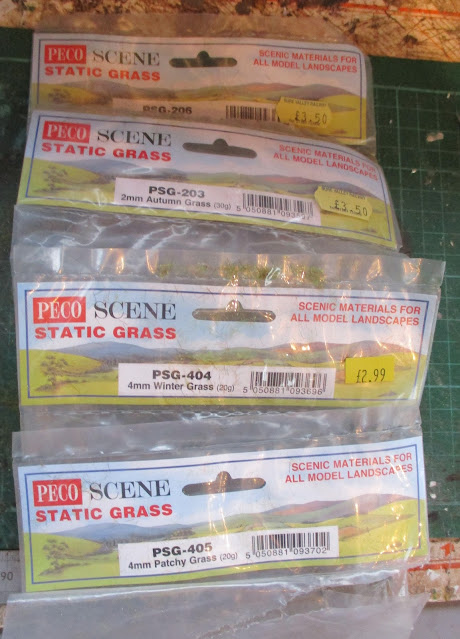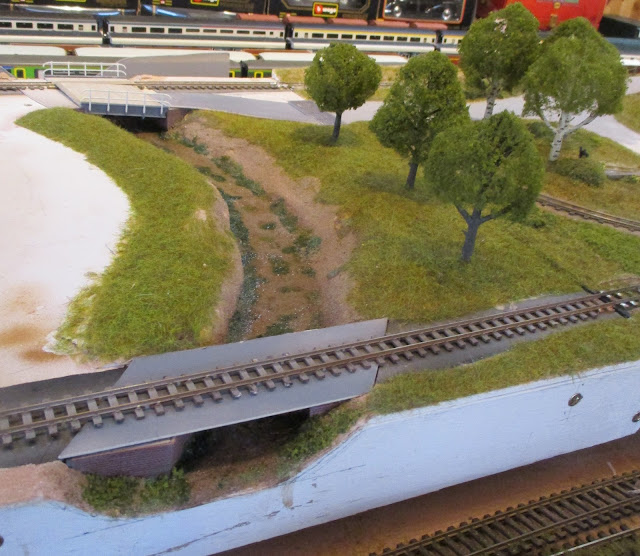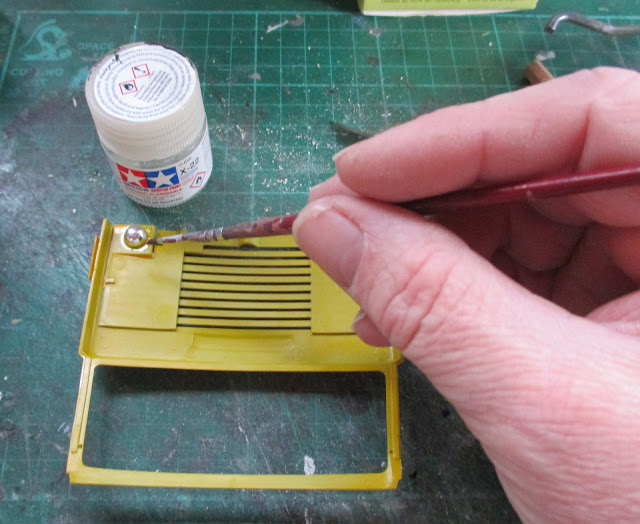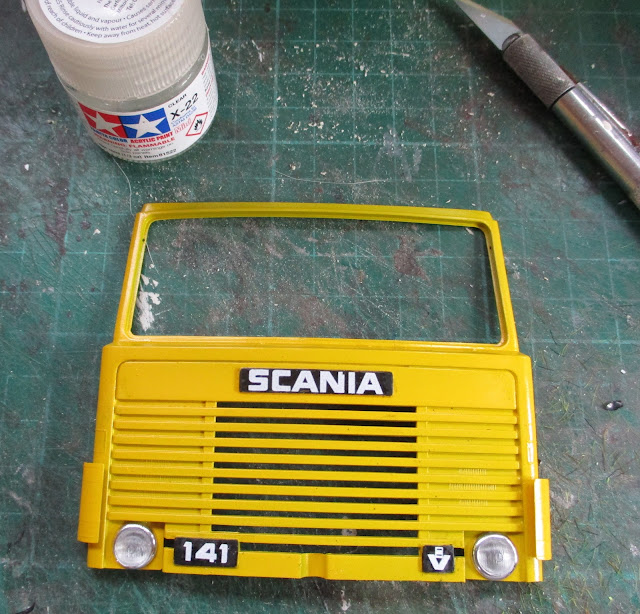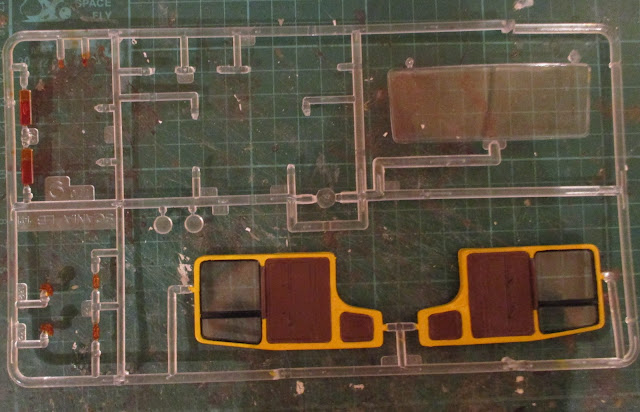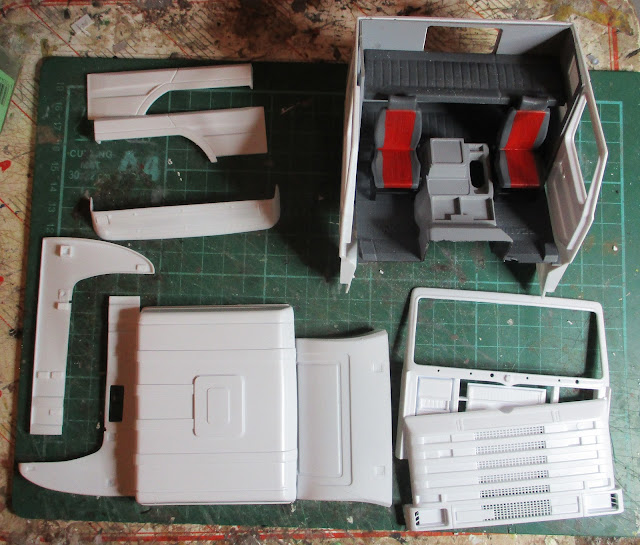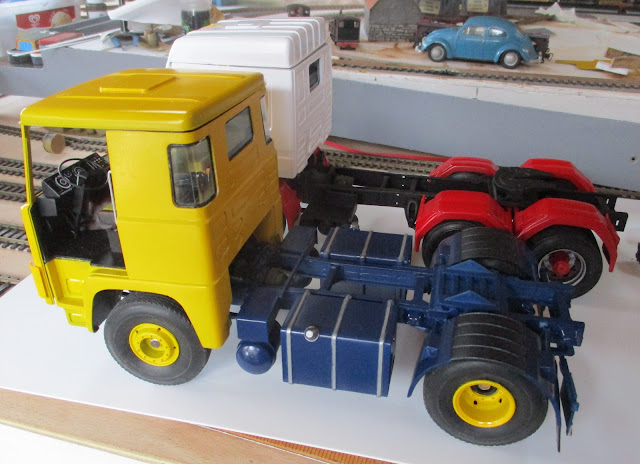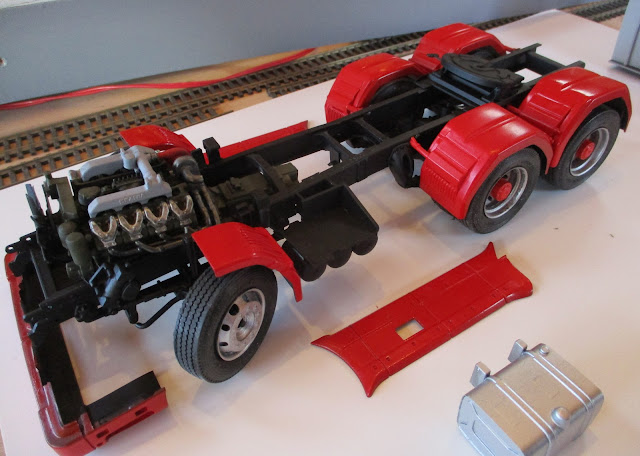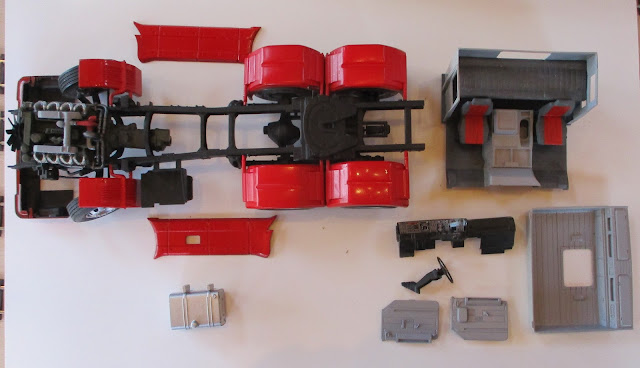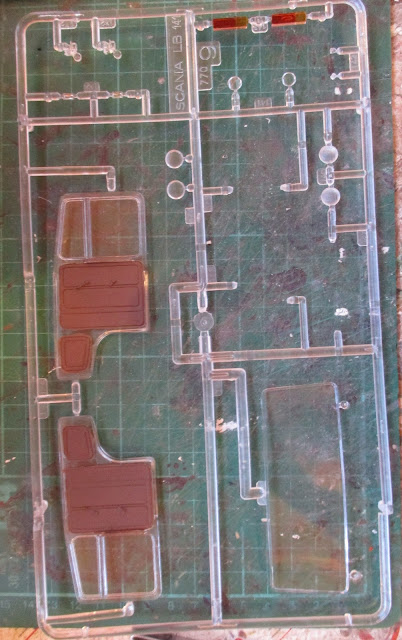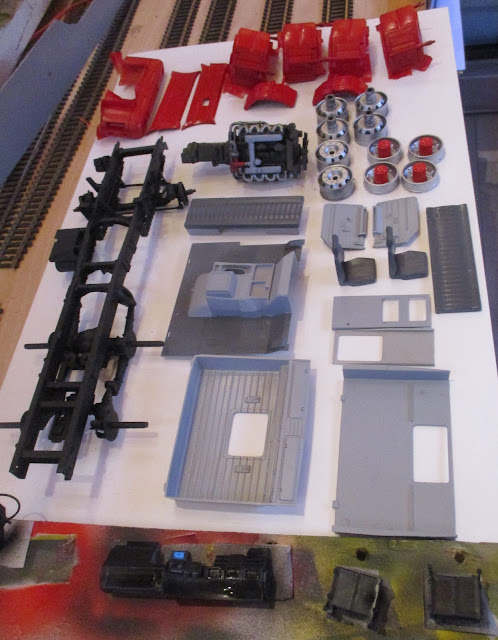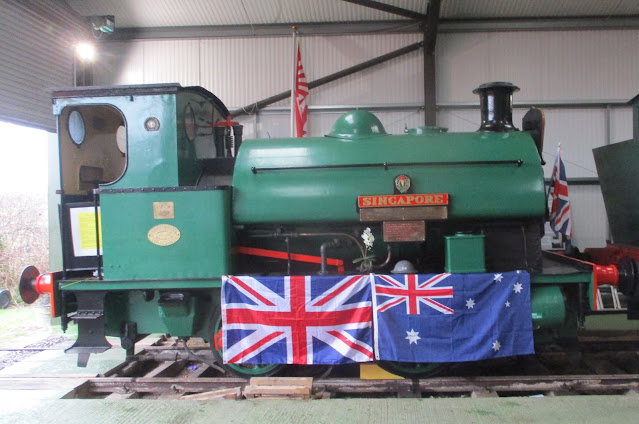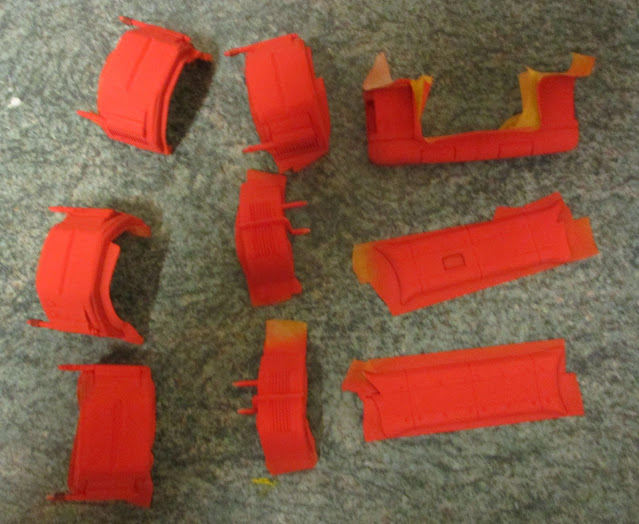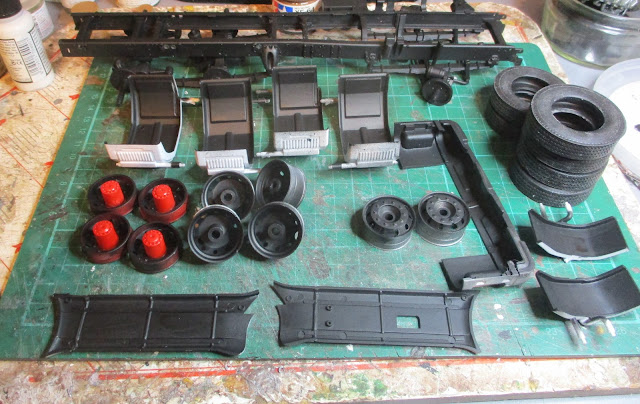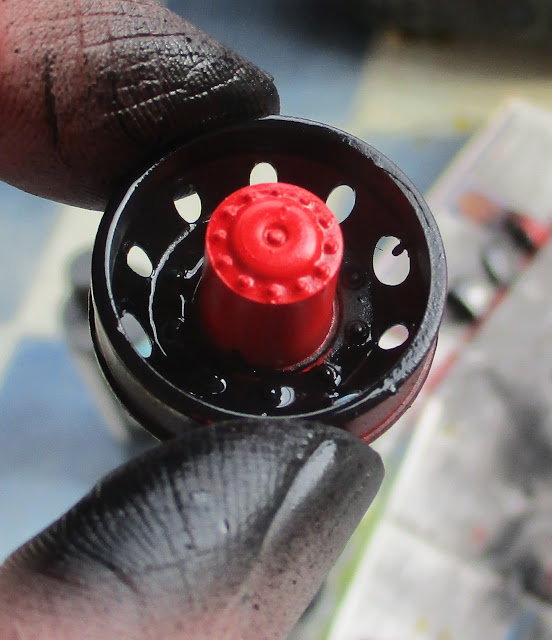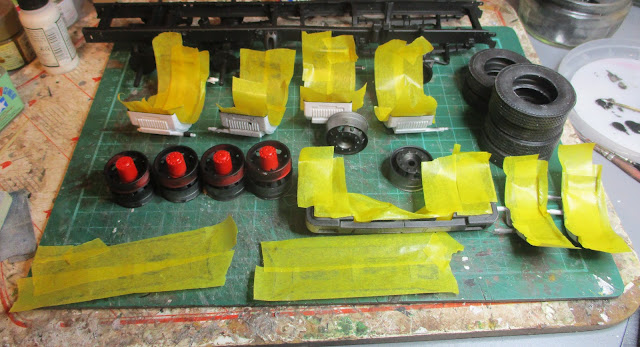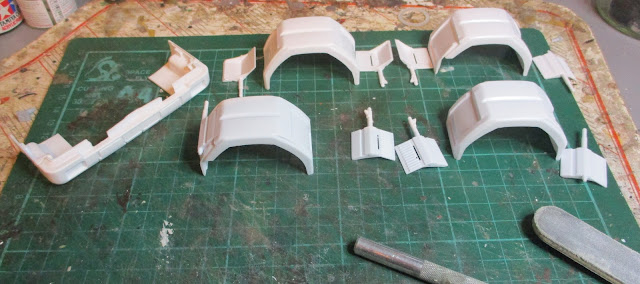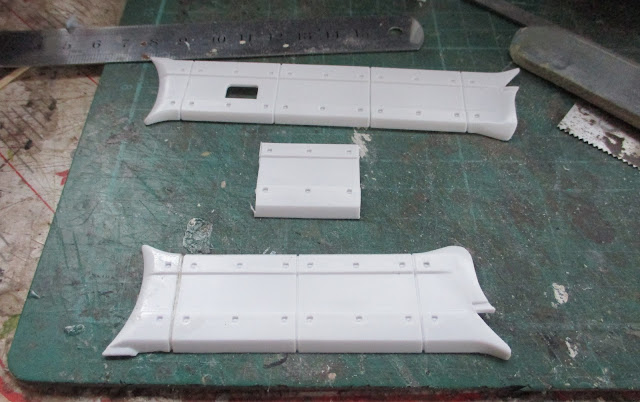As we batten down the hatches here in the UK for Storm Franklin, which will be the third storm in five days, I decided it was time to brighten my life having got soaked on this mornings bike ride, by making things a bit green. Although I try my best to be environmentally friendly, this making it green refers to grassing some of my 009narrow gauge layout. I thought that this would be a visual boost in the work on that layout and as Mrs. Woody had decided (I know my place) we were having a quiet day in then the opportunity was too good to miss.
Whereas back in the 70's and 80's model grass was mainly created using dyed saw dust or for the more adventurous dyed lint which had an art all of itself to look realistic todays modeller has a vast array of more realistic products. Static grass has been around for a few years now and it has revolutionised modelling green areas. The grass is made up of nylon fibers which come in an assortment of lengths and colours. It is all to easy to fall into the trap of modelling grass as though it were some Alpine grass meadow in the full flight of summer growth with lots of sun and rain producing a vivid bright green. Here in the UK most grass in the countryside is a mix of grasses of a much more subdued pallet of greens. My chosen shades of green were four varieties, Winter Green, Autumn Green, Patchy Grass and Dead Grass! All by Peco and a mix of 2mm and 4mm in length so about a scale 6 to 12 inches long. This was not going to be a manicured lawn!
The rea to be grassed is by the river and I also wanted some trees there as well. Luckily WMD Stores had three Woodland Scenics trees of a suitable size in stock. These were brought out, tested for position and then the bases glued to the base board.
Now it was time to apply the static grass using a Peco applicator. This has a 9volt battery which is used to produce a charge to the sieve at the bottom of the hopper where the static grass is stored and shaken out of. The electrical circuit is completed by an earth wire which is placed into the glue which is applied to the surface to be grassed. As it leaves the hopper the static grass fibers become electrically charged and in effect land in the glue standing up therefore looking like individual blades of grass. Just don't touch the sieve of the applicator whilst the power is on as it gives a big jolt to you just like one of those electrical fly swats - don't ask how I know!
When I first bought the applicator I was persuaded to part with £9 for a bottle of 'special' Peco glue which was supposed to be conductive of electricity. Somewhat unconvinced about this supposed characteristic I used it and it worked well. I was also soon to be taught just how conductive it was. Having got some glue on my fingers I though no more about it until I used my tablet just after finishing the grassing. The touch screen of the tablet went crazy and it was the glue and its electrical conductivity that was doing it. Lesson learnt - wash hands straight after work!
Moving back to the layout the grass application is reasonably quick and soon shows results which is nice.
After an hour or so of doing by the river and behind the two huts on rthe canal wharf it looks like this.
There is still further work to do adding some more foliage but it does look a lot better than bare baseboard.
I even found time to add the headlight units to the front cab panel of the Scania 141LB. I used varnish to 'glue' these in which made the job nice and easy - working smarter not harder as I get older!
Hopefully Storm Franklin will leave as quickly as it came and we can get into some warmer weather when the grass gets green and grows!
